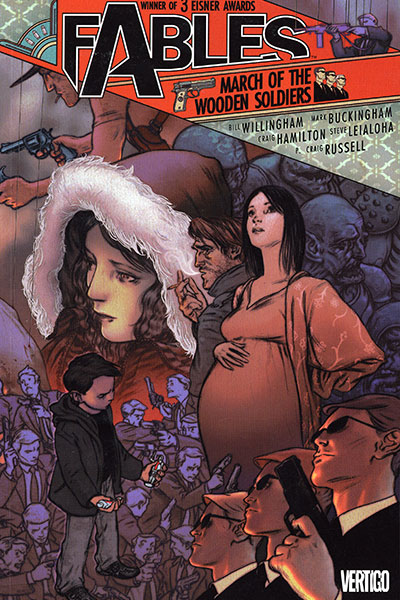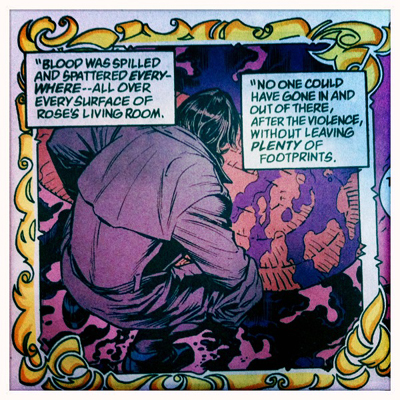
On Sundays, Felan profiles his favourite comics and graphic novels from across the diverse medium’s history.
In Fabletown, an ordinary but extraordinary secret neighbourhood in Manhattan, Old King Cole is the mayor, the Big Bad Wolf (known as Bigby) is the sherrif, Snow White is the city administrator and Little Boy Blue is her chief clerk. And the Frog Prince is the janitor? And Cinderella is an international covert agent? I can’t quite put my finger on it, but there’s something different about the fairy tales in writer Bill Willingham’s Fables.
In Fables, all fairy tale characters and creatures (or “fables”) once co-existed in a universe of connected worlds known collectively as the Homelands. The stories ordinary humans tell about them are all more or less true, but they’re only fragments of the lives of these familiar characters. Hundreds of years ago, a dark, mysterious being known only as the Adversary laid waste to the Homelands, conquering nearly every fairy tale world. Most of the fables could do nothing, but a handful resisted, and managed to escape into the mundane world – reality as we know it – and establish Fabletown, the secret New York community described above. Although centuries later things have reached a certain level of equilibrium, the constant threat and traumatic memory of the Adversary’s forces undercuts the lives of every exiled fable, with the leaders of the community dealing with an endless series of minor and major crises. If this reminds you of the re-imagined Battlestar Galactica TV series, you’re not alone – it’s a remarkably similar setup. The difference, though, is that Fables has a wonderful sense of humour, and never falls into the bleak self-seriousness that characterizes BSG.
Given the dramatic backstory, you might expect Fables to be some sort of modern-fantasy epic, but the real genius of the comic is that it keeps the focus very tight on specific stories within the Fabletown community. The first trade paperback, in addition to introducing us to the world, is also a stand-alone mystery in which Bigby Wolf tries to solve the murder of Snow White’s wild-child sister, Rose Red. Although there is an overarching storyline, it evolves organically through discrete chapters, most of which also function as complete stories. As an ongoing series, which recently marked its 100th issue and shows no sign of slowing, this approach is very effective, and Willingham doesn’t fall into the trap of constantly re-asserting the status quo. The world and characters of Fables are constantly changing – main characters recede into the background, new characters are introduced, people die or disappear. Halfway through the story, things are irrevocably transformed, and it keeps the comic from getting tired.

Fables is drawn primarily by Mark Buckingham, with a rotating cast of guest pencillers working on specific story arcs. The style is simple and very reminiscent of 1980s mainstream comic books, with bold colours and clean lines. The best part about the artwork is the marginalia – beautiful little filigrees, scrolls, and details around the edges of the panels and pages that contextualize the action based on mood, tone and who appears in the scene. The covers, mostly drawn by James Jean, are also excellent, as you can see above.
Fables is published on an ongoing monthly basis by Vertigo, and is also available in trade paperback form. There are also several spin-offs from the main comic, the most elaborate of which is Jack of Fables, itself an ongoing series from Vertigo.
For more information, check out Vertigo’s site here, also the source of the cover image above: http://www.dccomics.com/vertigo/
